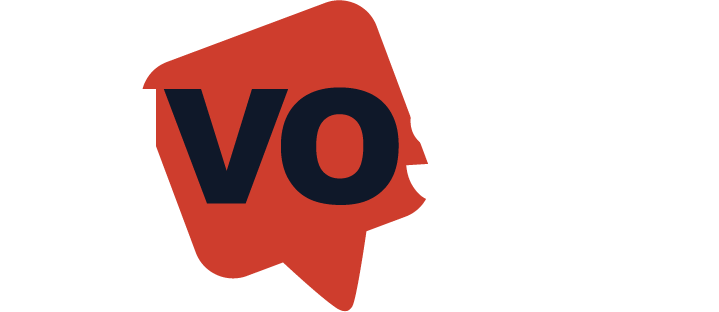For modern enterprises, striking a balance between adaptability and security is no small feat. Businesses today face mounting pressure to adopt robust solutions that cater to the demands of scalability, remote work, and data-driven decision-making. At the same time, they must also safeguard sensitive communications and adhere to stringent data protection regulations.
However, one robust technology is emerging as a highly effective solution for businesses seeking the benefits of both flexibility and security: the hybrid cloud.
This technology enables organisations to seamlessly integrate public and private cloud environments, creating a unified system that adapts to their unique operational needs. When leveraging hybrid cloud infrastructure, you can ensure secure and scalable business communications, reduce operational risks, while gaining a competitive edge.
In this blog, we will explore the concept of the hybrid cloud, its advantages, how it empowers businesses with flexibility and security, and actionable steps for successful adoption.
Understanding the Hybrid Cloud in Business Communications
Defining the Hybrid Cloud
The hybrid cloud is a computing architecture that combines the key elements of private and public cloud services. While private clouds cater to businesses needing exclusive control over sensitive data, public clouds offer scalability and cost-effectiveness. The hybrid cloud bridges these two environments, enabling businesses to store critical, sensitive information securely in private cloud environments while utilising public cloud resources for less critical tasks.
Why the Hybrid Cloud Matters for Modern Businesses
The hybrid cloud has gained immense traction in business communications for good reason. Its ability to scale operations, ensure data protection, and streamline workflows makes it an invaluable tool for teams.
The global hybrid cloud market was valued at $130.87 billion in 2024 and is expected to reach $329.72 billion USD by 2030. This explosive growth indicates its rapidly expanding role in business communications worldwide.
Hybrid Cloud Advantages in Business Communications
Flexibility Without Boundaries
One of the most significant advantages of the hybrid cloud is its unmatched flexibility. A hybrid cloud solution empowers businesses to adapt quickly to changing operational needs, whether scaling up to support business growth or accommodating a remote workforce.
Enhancing Performance and Accessibility
With a hybrid cloud, businesses can improve the speed and accessibility of their communication systems. By leveraging public cloud services for routine tasks and private cloud infrastructure for mission-critical processes, companies achieve streamlined data flow and enhanced performance across multiple locations, even globally.
Strength in Security and Data Protection
The average cost of a data breach in the UK between March 2023 and February 2024 was a staggering £3.58 million. A hybrid cloud infrastructure minimises this risk by giving businesses greater control over sensitive communication data while still allowing the flexibility of public cloud services. Hybrid cloud architectures enable enterprises to encrypt data, implement advanced authentication, and maintain regulatory compliance.
Driving Flexibility Through the Hybrid Cloud
Supporting Dynamic Workforces
With the rise of hybrid and remote work environments, businesses need communication technologies that can cater to the dynamic needs of their teams. The hybrid cloud excels at this, providing seamless connectivity across devices and locations while enabling efficient collaboration.
Tailoring Cloud Solutions to Business Needs
Every business is unique, and one size doesn’t fit all. With hybrid cloud environments, companies can customise their communication systems to align with their goals, industry requirements, and operational workflows. Whether it’s prioritising speed for customer service teams or advanced security for legal departments, the hybrid cloud offers tailored solutions.
Scaling with Ease and Efficiency
Scaling operation infrastructures can be challenging, but the hybrid cloud makes it smooth and cost-effective. For example, a growing e-commerce business can expand its public cloud resources to handle seasonal traffic surges while maintaining secure transaction processing on its private cloud.
Securing Business Communications With the Hybrid Cloud
Building Resilience Against Threats
A robust hybrid cloud setup is a fortress against cybersecurity threats. It leverages enhanced threat detection and response systems, allowing businesses to mitigate potential vulnerabilities. As a result, sensitive customer data and confidential information remains safe.
Ensuring Compliance and Data Protection
Navigating data protection regulations such as GDPR can be challenging, but hybrid cloud solutions simplify compliance. With a hybrid cloud, businesses can keep sensitive data within private cloud environments housed in specific premises data centers while meeting regulatory requirements for transparency and security.
Balancing Accessibility With Data Privacy
A hybrid cloud ensures businesses maintain secure communication systems without compromising accessibility. For instance, teams needing access to software applications or cloud environments can do so without risking data breaches or unauthorised usage.
Best Practices for Implementing Hybrid Cloud Solutions
Hybrid cloud adoption can transform your organisation by providing the flexibility of multiple environments while ensuring operational efficiency. Below, we’ll explore key steps to implement a hybrid cloud solution effectively, ensuring a seamless and secure transition.
Assess Your Needs
The first step to adopting a hybrid cloud solution is understanding your organisation’s unique requirements. Ask critical questions like, “What business challenges are we solving?” and “Which systems need improvement?” For example, if your main pain point is managing surges in demand during peak periods, a hybrid cloud’s scalability could address this issue effectively.
A detailed assessment should also evaluate the current infrastructure and workloads. Identify which applications are better suited for public cloud usage (e.g., customer-facing apps) and which processes need to remain on-premises due to strict compliance requirements (e.g., financial data). By aligning hybrid cloud adoption with your organisation’s strategic goals, you’ll avoid costly missteps down the line.
Plan Your Integration
A robust integration plan is essential to ensure a smooth transition to a hybrid cloud architecture. You can start by identifying dependencies between existing on-premise systems and cloud platforms, then move on to implementing security and compliance measures.
Next, focus on scalability and flexibility. What’s great about the hybrid cloud is its ability to scale up or down based on your organisation’s needs. You should plan for this by setting up a monitoring and management system that can handle both on-premise and cloud resources.
Communication is also critical during this stage. Keep all stakeholders informed of the plan, detailing how the hybrid cloud will impact workflows and improve overall operations. From there, you can define clear KPIs to measure the success of the integration, such as reduced latency or improved system uptime.
Prioritise Security Measures
Security is a top priority when designing a hybrid cloud environment, as the use of both public and private clouds can introduce vulnerabilities. Implementing robust security measures ensures that sensitive data remains protected, regardless of where it resides.
Start with identity and access management (IAM) solutions to enforce secure login processes. Multi-factor authentication and role-based access control are effective ways to limit unauthorised access. Additionally, encrypt sensitive data both in transit and at rest to safeguard it from breaches.
Regular security audits are also crucial to maintaining a secure hybrid cloud system. Organisations can leverage caller fraud solutions to detect unusual activity, ensuring any vulnerabilities are addressed before they become a larger issue.
Train Your Team
Your hybrid cloud tools are only as effective as the people using them. For this reason, you should equip your employees with the knowledge to use cloud resources effectively, reducing resistance and boosting adoption.
Offer customised training for each department. For IT teams, this could include workshops on managing workloads across public and private clouds or using automation tools. For non-technical staff, focus on practical benefits like collaborative platforms and workflow efficiency.
Appoint cloud ambassadors to promote best practices and provide support. Use feedback channels like Q&A sessions or surveys to address challenges and questions as employees adapt to hybrid cloud processes.
Preparing your team properly allows you to maximise the benefits of hybrid cloud adoption and set your organisation up for long-term success.
Partner With Proven Cloud Providers
This one may seem obvious, but collaborating with reliable cloud service providers is critical for a smooth hybrid cloud transition. That’s why reputable cloud providers like Invosys ensure seamless integration, ongoing support, and custom solutions tailored to your business needs.
Invosys Offers Secure and Flexible Hybrid Cloud Solutions
Businesses need a communication infrastructure that adapts to rapid changes without compromising security. Hybrid cloud solutions are the answer. Through our partnership with Avaya IP Office, Invosys delivers competitive advantages with cloud communications while catering to the unique needs of your organisation.
From supporting dynamic workforces to optimising data protection, Invosys’s hybrid cloud service is a trusted solution amongst businesses.
Contact Invosys to see how we can help you implement secure and flexible hybrid cloud solutions that secure and future proof your business communications.



